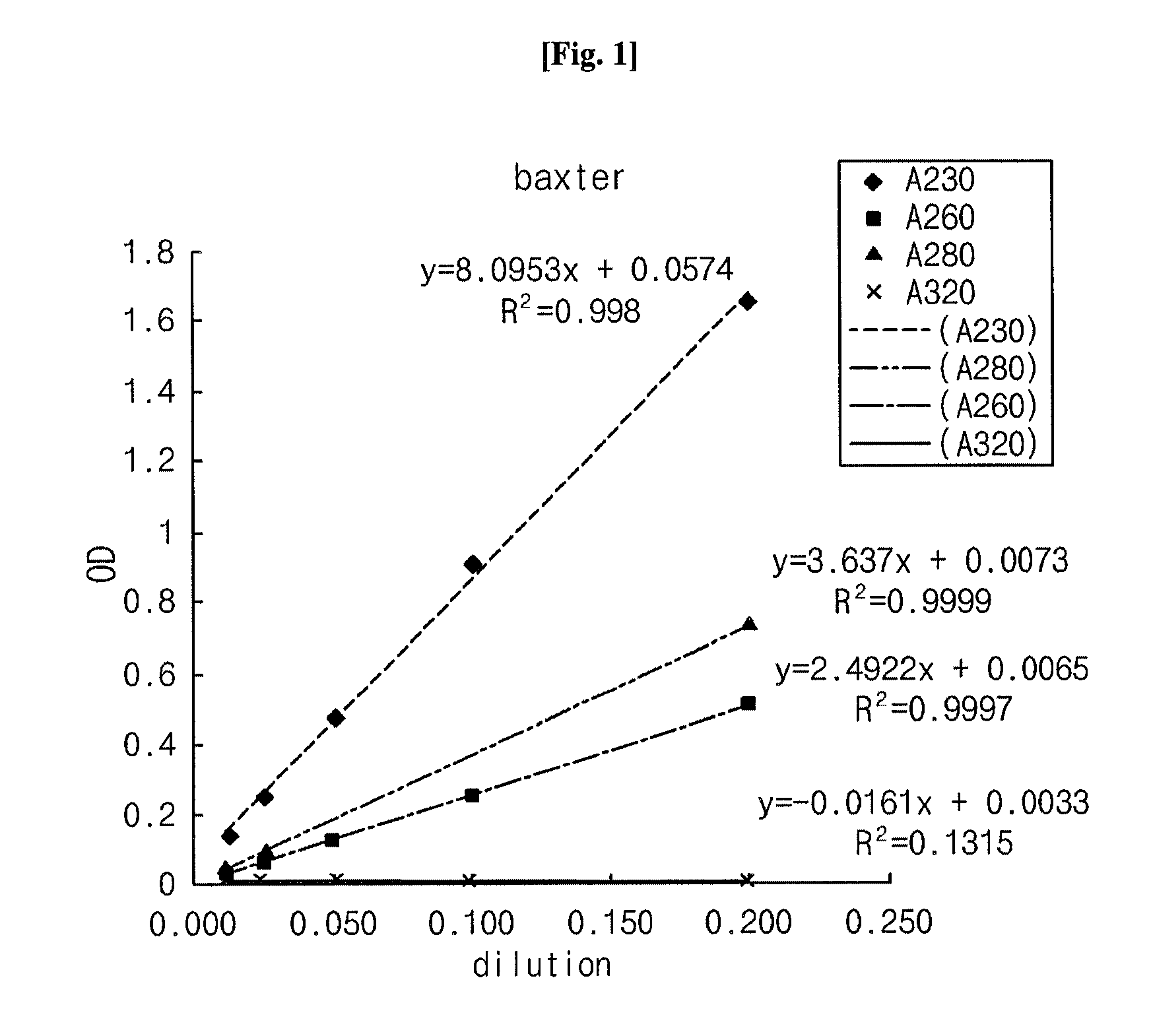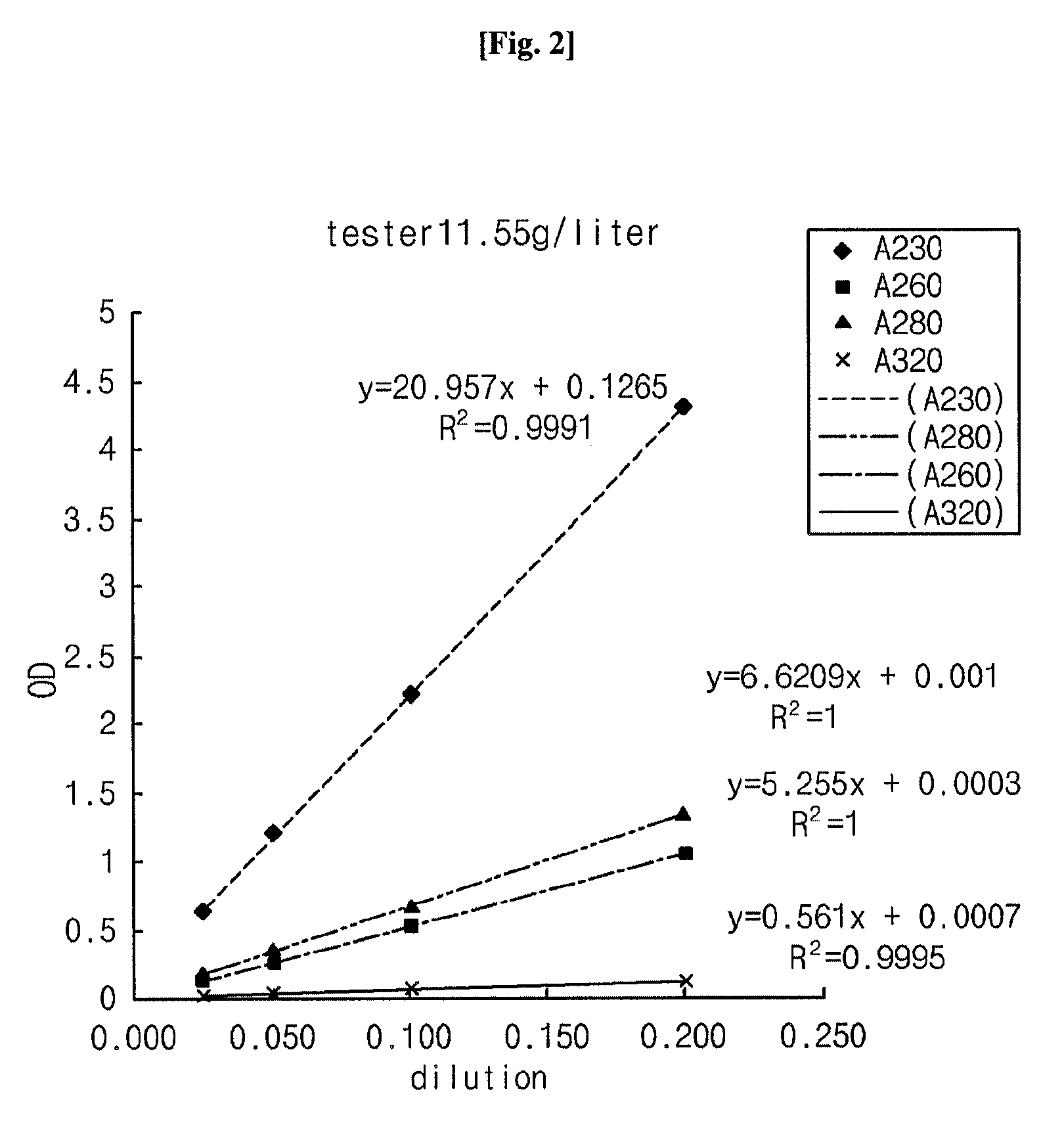Compositions for Peritoneal Dialysis
a technology of peritoneal dialysis and composition, which is applied in the field of composition for peritoneal dialysis, can solve the problems of destroying the defense mechanism of the peritoneum, dialysis suffers from various problems, and metabolic disorders
- Summary
- Abstract
- Description
- Claims
- Application Information
AI Technical Summary
Benefits of technology
Problems solved by technology
Method used
Image
Examples
example 1
Preparation of Dialysate for Peritoneal Dialysis Comprising α-Keto Amino Acid
[0032]In the gambrosol trio 40 C solution (Gambro Lundia AB, Sweden) the composition of which is given in Table 1, the commercially available α-keto amino acid complex Ketosteril™ (Fresenius Kabi Deutschland GmbH, Germany) the composition of which is given in Table 2, below, was dissolved in a concentration of 11.55 g / L, so as to afford a composition for peritoneal dialysis comprising α-keto amino acids in accordance with the present invention.
TABLE 1IngredientMass (g / L)Sodium Chloride5.38Calcium Chloride Dihydrate0.271Magnesium Chloride Hexahydrate0.054Sodium Lactate4.72pH6.6
TABLE 2IngredientMass (mg)α-keto Isoleucine67α-keto Leucine101α-keto Phenylalanine68α-keto Valine86Hydroxymethionine59L-Lysine75L-Threonine53L-Tryptophan23L-Histidine38L-Tyrosine30
example 2
Analysis of Concentration of Amino Acids and Keto-Amino Acids Using Spectrophotometer
[0033]Using a UV spectrophotometer (UV1601, Shimadzu, Japan), the composition comprising α-keto amino acids, prepared in Example 1, was analyzed for amino acid concentration change over time while the Neutril solution comprising amino acids was used a control. The two solutions were measured for absorbance at various wavelengths from 230 to 350 nm in order to examine the diffusion of amino acid derivatives. In this regard, UV spectra were obtained by measuring the absorbance at various wavelengths using a UV spectrophotometer (UV1601, Shimadzu, Japan). Concentrations were determined by comparing absorbance values at 280 nm, the wavelength usually used for the quantitative analysis of amino acids. The results are given in Tables 3 and 4, below, and depicted in respectively corresponding FIGS. 1 and 2.
TABLE 3Absorbance of Neutril Solution According to Dilution RatioDilution Ratio0.0130.0250.0500.1000....
example 3
Absorption Peak According to Wavelength Band
[0035]A control (Neutril) and a test group (α-keto amino acid) were examined with respect to absorption peak according to wavelength band. The results are given in Table 5 corresponding to FIG. 3.
TABLE 5Absorption Peaks of Neutril and α-Keto Amino Acid SolutionSolutionWavelength (nm)Absorption peakControl276.60.732Test275.60.663
[0036]Absorbance peaks at 280 nm of the two solutions were coincident with each other, indicating that absorbance at 280 nm can be used for the quantitative analysis of the keto acid used as a test solution.
PUM
| Property | Measurement | Unit |
|---|---|---|
| concentration | aaaaa | aaaaa |
| wavelengths | aaaaa | aaaaa |
| concentration | aaaaa | aaaaa |
Abstract
Description
Claims
Application Information
 Login to View More
Login to View More - R&D
- Intellectual Property
- Life Sciences
- Materials
- Tech Scout
- Unparalleled Data Quality
- Higher Quality Content
- 60% Fewer Hallucinations
Browse by: Latest US Patents, China's latest patents, Technical Efficacy Thesaurus, Application Domain, Technology Topic, Popular Technical Reports.
© 2025 PatSnap. All rights reserved.Legal|Privacy policy|Modern Slavery Act Transparency Statement|Sitemap|About US| Contact US: help@patsnap.com



